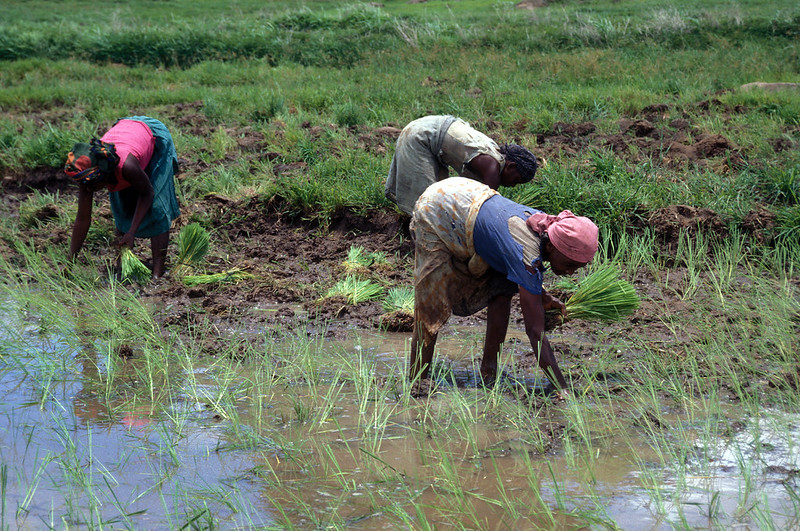The primary distinction between direct seeding and transplanting is that direct seeding involves sowing plant seeds directly in a garden, while transplanting entails planting seedlings or whole plants in a garden once they have been removed from a greenhouse or nursery.
Key Takeaways
- Direct seeding is more cost-effective and results in faster maturation of plants, but it is riskier due to exposure to environmental stresses and weed pressure.
- Transplanting requires fewer seeds and does not need thinning of seedlings, but it is less cost-effective and labor-intensive than direct seeding.
- Both methods have unique advantages and disadvantages, and the choice between the two depends on factors such as personal preference, cost, and plant type.
What is Direct Seeding?
Direct seeding is a planting method used by farmers when they grow plants in their gardens or agricultural fields. In this method, farmers directly sow seeds in the ground, which is the same place where the plant should be grown. This method is more suitable for seeds that are quick to germinate. Some vegetables, such as radishes, beans, peas, beets, and turnips, also grow through direct seeding. However, prior to direct seeding, the farmer should be aware of the possibility of growing desired plants through direct seeds. There are seed catalogues that help farmers in this aspect.
Direct seeding is cost-effective since it needs less labour. Greenhouse seedling production and transplanting steps are not involved in direct seeding. Moreover, plants tend to mature fast when sowing seeds directly in the field. However, direct seeding can be riskier than transplanting since seeds are directly exposed to environmental stresses and weed pressure. Therefore, farmers should select the best place to sow seeds, minimizing the stresses. Another important factor that farmers should consider during direct seeding is the space between seedlings. In order to provide space evenly for plants, a few seedlings can be pulled out (thinning seedlings). Crowded plants tend to compete for light, nutrients, water, etc. As a result, plant growth and yield can drop, and the occurrence of diseases can increase.
What is Transplanting?
Transplanting is a planting method in which seedlings or whole plants are planted directly in the garden or fields. In this method, seeds are germinated in containers inside the greenhouse, and then once seedlings are grown up to a certain stage, they are transferred and transplanted in the garden or in the field. Some vegetables such as lettuce, chard, kale, brassicas, fennel, tomatoes, peppers, fresh onions (in clusters), storage onions, basil, squash, and cucumbers are commonly transplanted. Unlike in direct seeding, in transplanting, fewer seeds are needed for making seedlings. In addition, thinning of seedlings is not necessary for this method. But hardening off of seedlings is necessary prior to transplantation.
When growing seedlings inside the greenhouse, it is easy to control environmental conditions such as temperature, humidity, water availability, etc. It is also easy to protect seedlings from predators and other factors such as wind and rain. Moreover, transplanting is more advantageous in weed management since transplanted crops have a better chance of outcompeting weeds. However, when compared to direct seeding, transplanting is labour-intensive, so it is less cost-effective.
What are the Similarities Between Direct Seeding and Transplanting?
Direct seeding and transplanting are two planting methods.
Seeds are involved in both methods.
Farmers select either method based on their preferences and money.
There are advantages as well as disadvantages to each method.
What is the Difference Between Direct Seeding and Transplanting?
Direct seeding is the planting method that involves sowing seeds directly in the field or garden, while transplanting is the planting method that involves the planting of seedlings or whole plants in the field or garden. Thus, this is the key difference between direct seeding and transplanting. Moreover, direct seeding is more cost-effective than transplanting since it does not involve greenhouse production and transplanting costs. Furthermore, plants mature faster when grown via direct seeding than transplanting. Most importantly, it is not necessary to disturb root systems when planted via direct seeding. But in transplanting, seedlings should be uprooted and planted again.
Summary – Direct Seeding vs Transplanting
There are different planting methods. Direct seeding and transplanting are two such methods. In direct seeding, seeds are sown in the garden. In transplanting, seedlings are planted in the garden. Transplanting requires growing seedlings inside a greenhouse or indoors. When comparing the cost of each method, direct seeding is more cost-effective than transplanting. Moreover, plants mature faster when seeded directly. However, transplanting needs fewer numbers of seeds, and it is not necessary to do thinning of seedlings. So, this is the summary of the difference between direct seeding and transplanting. There are advantages and disadvantages unique to each method.
